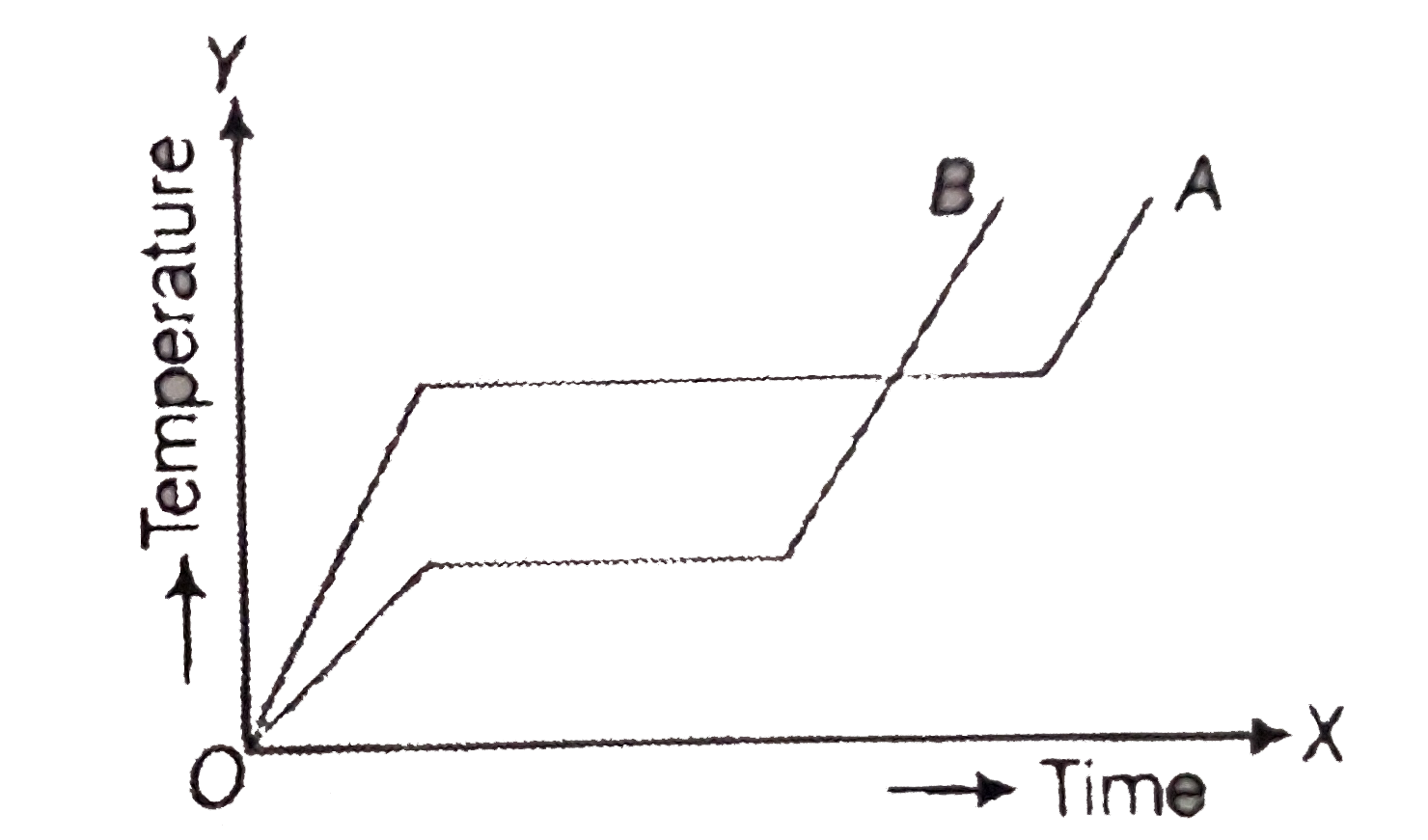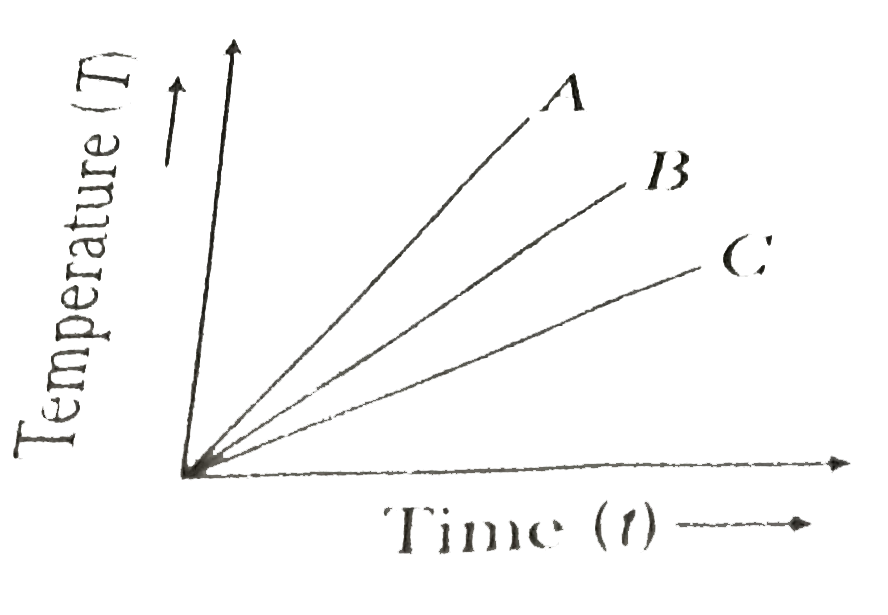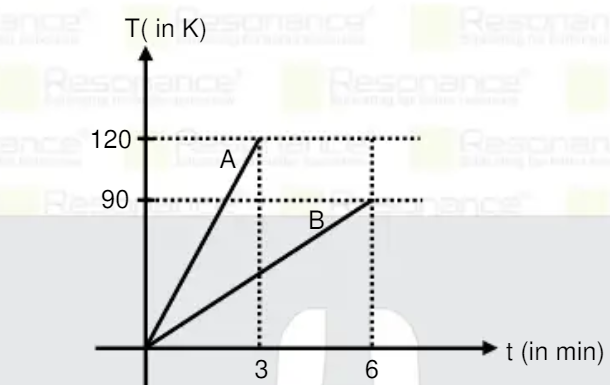The temperature of a hot liquid in a container of negligible heat capacity falls at the rate of 3K/min due to heat emission to the surroundings, just before it begins to solidify. The temperature then remains constant for 30min, by the time the liquid has all solidfied. Find the ratio of specific heat capacity of liquid to specific latent heat of fusion.
The correct Answer is:190
Step by step video, text & image solution for The temperature of a hot liquid in a container of negligible heat capacity falls at the rate of 3K//min due to heat emission to the surroundings, just before it begins to solidify. The temperature then remains constant for 30min, by the time the liquid has all solidfied. Find the ratio of specific heat capacity of liquid to specific latent heat of fusion. by Physics experts to help you in doubts & scoring excellent marks in Class 11 exams.
Topper's Solved these Questions
- BOOK - RESONANCECHAPTER - HEAT TRANSFEREXERCISE - Exercise-31videos
HEAT TRANSFER
- BOOK - RESONANCECHAPTER - HEAT TRANSFEREXERCISE - Advancel Level Problems17videos
HEAT TRANSFER
- BOOK - RESONANCECHAPTER - HEAT TRANSFEREXERCISE - Exercise-21videos
HEAT TRANSFER
- BOOK - RESONANCECHAPTER - GRAVITATIONEXERCISE - Exercise21videos
GRAVITATION
- BOOK - RESONANCECHAPTER - KINEMATICSEXERCISE - Exercise65videos
KINEMATICS
Similar Questions
Equal masses of two liquids A and B contained in vessels of negligible heat capacity are supplied heat at the same rate. The temperature-time graphs for the liquids are shown in the figure. If S represents specific heat and L represents latent heat of liquid, then
 View Solution
View SolutionAn electric heater of power 150W is immersed in 0.75kg of ice at 0∘C in a lagged container of negligible heat capacity. The temperature remains constant for 27.5 minutes and then rises to 40.0∘C in further 14minutes. Calculate the specific heat capacity of water.
View Solution
Knowledge Check
- Question 1 - Select One
If accidently the calorimeter remained open to atmosphere for some time during the experiment, due to which the steady state temperature comes out to be 30∘C, then total heat loss to surrounding during the experiment, is (Use the specific heat capacity of the liquid from previous questions).
A20kcalB15kcalC10kcalD8kcal - Question 2 - Select One
Two liquids have the densities in the ratio of 1:2 and specific heats in the ratio of 2:1. The ratio of thermal capacity of equal volume of those liquids is
A1:1B1:4C4:1D2:1 - Question 3 - Select One
The temperatures versus time graph is shown in figure. Which of the substance A,B and C has the lowest heat capacity if heat is supplied to all of them at equal rates.
 AABBCCDAll the above
AABBCCDAll the above
A copper calorimeter of negligible thermal capacity is filled with a liquid. The mass of the liquid is 250 gm. A heating element found that the temperature of the calorimeter and its contents rise form 25∘C to 30∘C in 5 minutes when a current of 2.05 A is passed through it at al potential difference of 5 volts. The liquid is thrown off and the heater is switched on again. it is now found that the temperature of the calorimeter alone remains constant at 32∘C when the current through the heater is 0.7 A at the potential difference 6 volts. Calculate the specific heat capacity of the liquid. The temperature of the surrounding is 25∘C
View SolutionTwo containers contain two liquids A and B. The mass of liquid A is half the mass of liquid B. Both of them are heated to that extent so that the increase in the temperatures of the liquids is the same. The heat supplied for this purpose in liquid A is double that in the case of liquid B. Find out the ratio of the specific heat of A and B.
View SolutionA copper calorimeter of negligible thermal capacity is filled with a liquid. The mass of the liquid is 250g. A heating element of negligible thermal capacity is immersed in the liquid. It is found that the temperature of the calorimeter and its contents rise form 25∘C to 30∘C in 5 minutes when a current of 2.05 amperes is passed through it at a potential difference of 5 volts. The liquid is throuwn off and the heater is switched on again. It is now found that the temperature of the calorimeter alone remains constant at 32∘C when the current through the heater is 0.7A at the potential differfnce 6 volts. Calculate the specific heat capacity of the liquid. The temperature of the surroundings is 25∘C.
View SolutionThe temperature vs time graph for two different gases A and B having same number of moles is as shown in figure. If heat is supplied by same rate to both the gases. Find ratio of specific heat capacity of both gases.
 View Solution
View SolutionTwo liquids of specific heat ratio 1:2 are at temperature 2θandθ
View Solution

